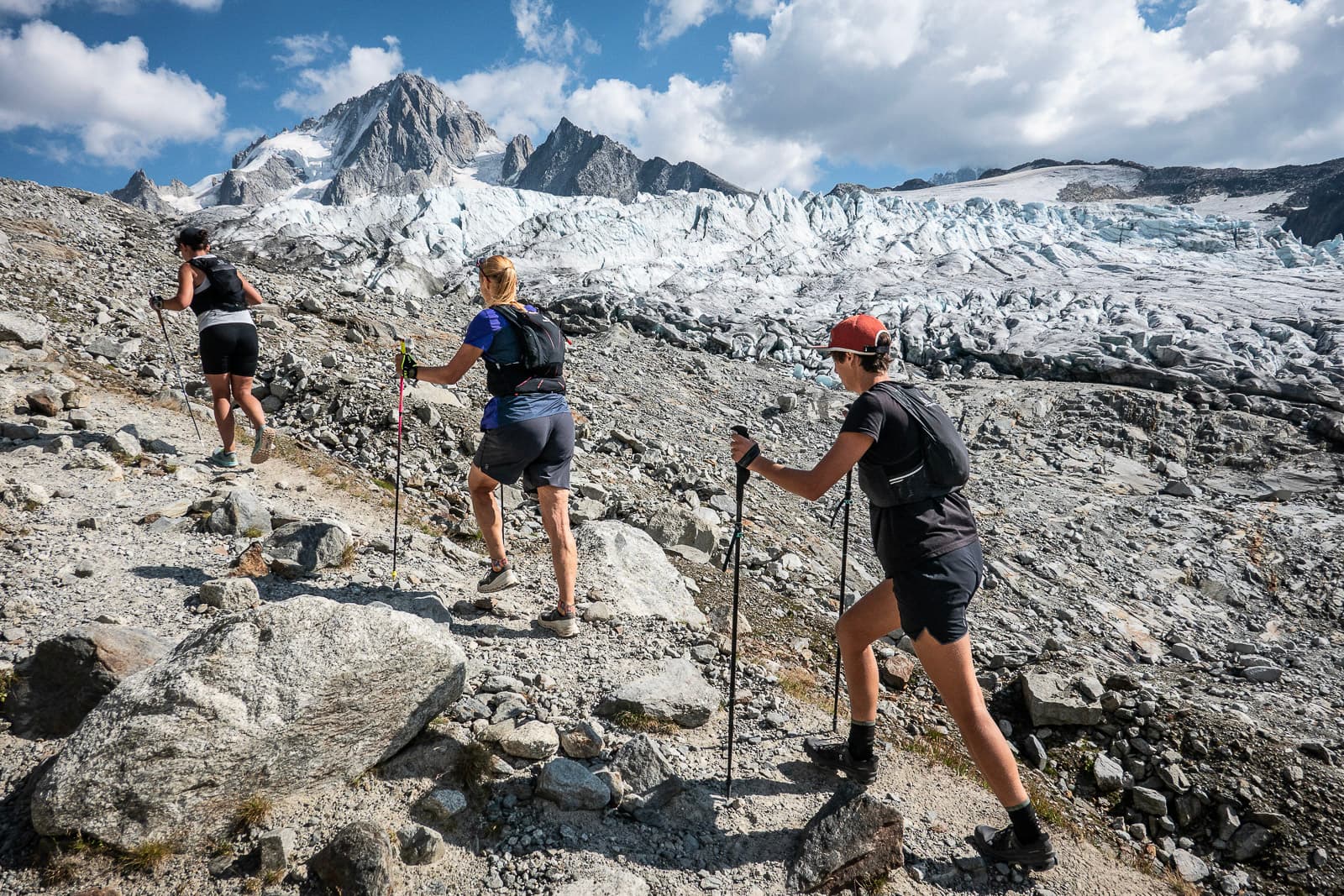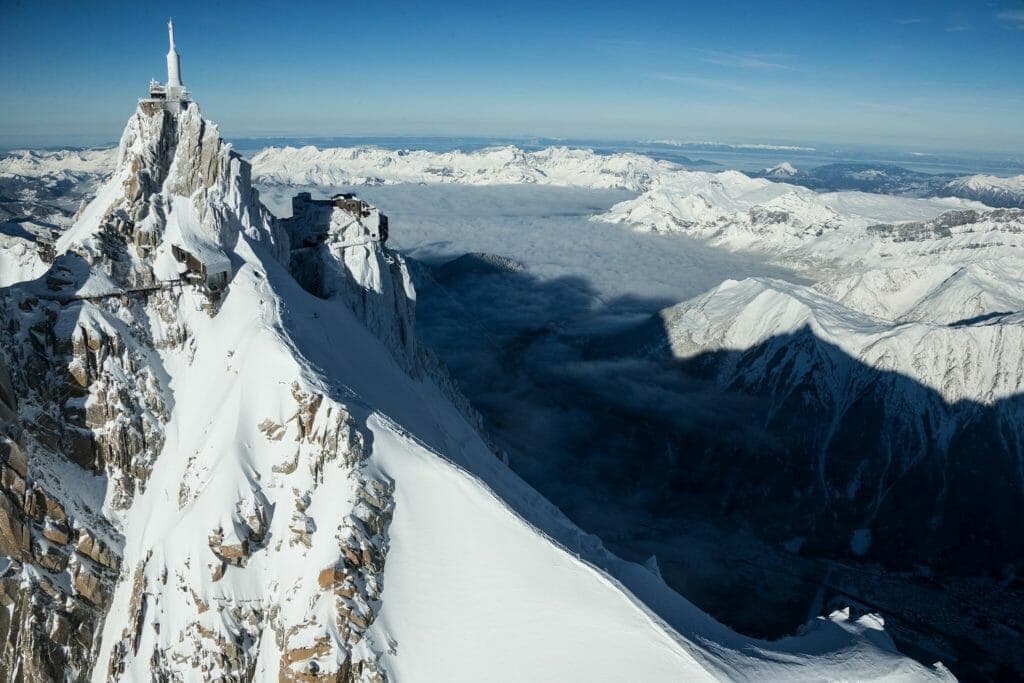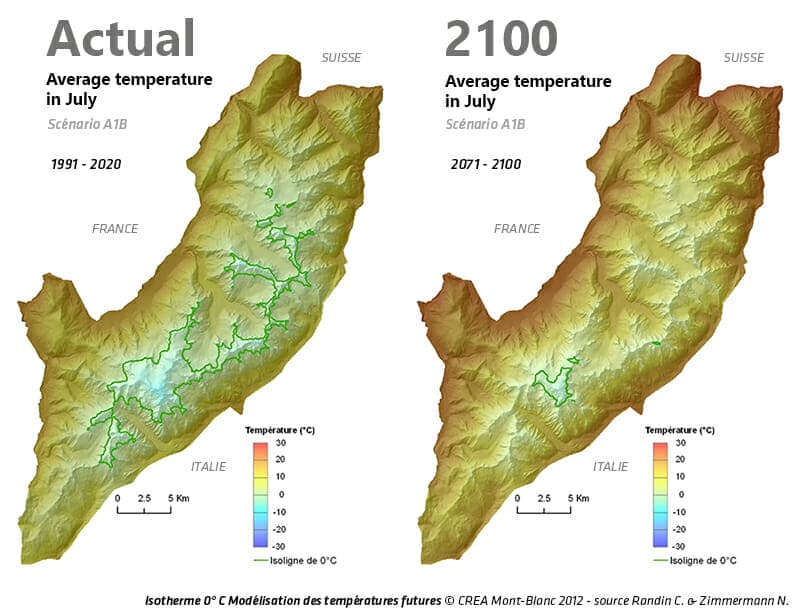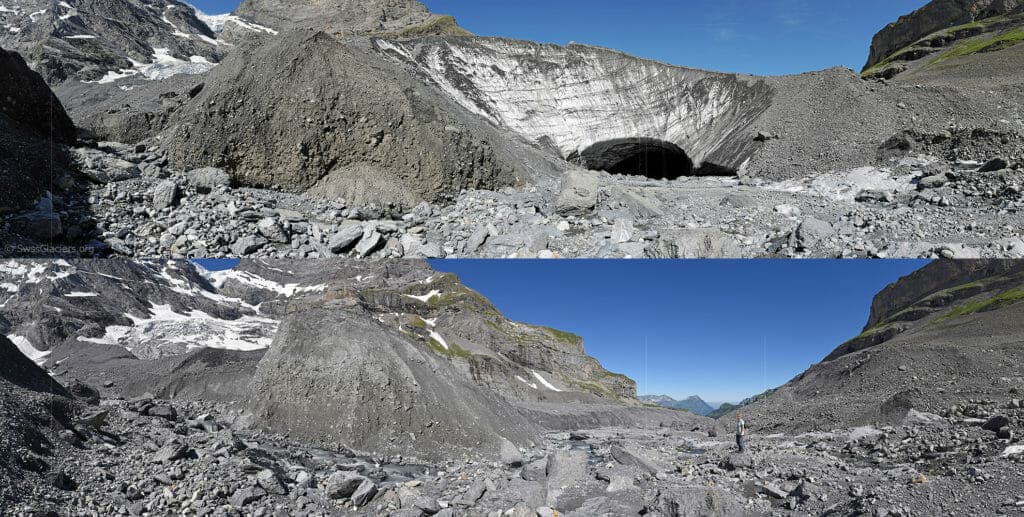

What is Run the Alps’ carbon footprint?

Run the Alps founder Doug Mayer and I met up for coffee in the fall, to try to determine the carbon footprint of the company. We wanted to identify every potential impact – including baggage transfers, hotel rooms, meals and even the pre-trip material Run the Alps sends to guests.
After an hour, we had developed a pretty extensive list. Next came the hard part: figuring out the carbon cost of each activity. Getting an accurate number for the carbon footprint of an object such as a guidebook can be extremely difficult. Here’s the sort of challenge we faced:
The true carbon footprint of a plastic toy, for example, includes not only the direct emissions resulting from the manufacturing process and the transportation of the toy to the shop: it also includes a whole host of indirect emissions, such as those caused by the extraction and processing of the oil used to make the plastic in the first place. If you think about it, tracing back all the things that have to happened to make that toy leads to an infinite number of pathways, most of which are infinitesimally small.
(Mike Berners-Lee, from the book, How Bad are Bananas – The Carbon Footprint of Everything.)
Luckily for us, we were already in touch with the UN Global Climate Action team and they kindly helped us with a breakdown, which made for interesting reading. Here’s what we found out.
Total Carbon Footprint of Run the Alps
Yearly Footprint (Office and staff commuting)
= 12.89 tons*
Average Trip Footprint (Seven guests and one guide)
= 6.94 tons*
*These totals includes an additional 10%, to assure we’re covering the impact.
It’s worth noting here that there are many greenhouse gases other than carbon dioxide. Methane, for example, is 25 times more potent per kilogram than C02 and nitrous oxide is a head-spinning 300 times more potent in terms of its warming effect. As a single activity can result in many different greenhouse gases being emitted, the usual convention is to express carbon footprint in terms of the CO2 equivalent. (The totals given throughout this article are expressed as such.)

The Breakdown
The figures provided below have been provided by the UN Global Climate Action Team and are expressed as CO2 equivalent:
Yearly Costs to Operate Run the Alps – 12.89 Tons
- Run the Alps office space: 5.89 tons*
- Run the Alps partner, Alpinehikers office space: 5.89 tons*
- Run the Alps founder commuting from Chamonix to United States, once per year: 1.11 tons
Notes
An average 25 square meter room in the US will use 11.77 tons of CO2 equivalent per year.
Average Per Trip: Transport – 5.16 Tons
- Baggage transfers: 1.62 tons
- Average guide commute to meet clients: 2.08 tons
- Guest transfers from Geneva to Chamonix and return: 1.46 tons
Notes
The travel of guests to and from the tour starting location varies significantly based on their individual origin and choice of transportation, making it challenging to measure consistently. We encourage all guests to minimize the impact thier travel has – for example by flying economy and using trains and buses where possible. However, for accuracy and transparency we have chosen not to include our guests’ inbound and outbound travel in our calculations.

Per Trip: Pre-Departure – 0.48 tons
- Seven guests each buying some new gear: a new jacket, trail running shoes and running vest: 0.14 tons
- Materials provided from Run the Alps: 0.34 tons
Per Trip: Food – 0.41 tons
Three meat eaters: 0.19 tons
Three pescatarians: 0.14 tons
One vegetarian: 0.042 tons
One vegan: 0.037 tons
Notes
Yearly footprint of an average meat eater in the US = 2.5 tons
Yearly footprint of a non-beef diet in the US = 1.9 tons
Yearly footprint of a vegetarian diet in the US = 1.7 tons
Yearly footprint of a vegan diet in the US = 1.5 tons
Per Trip: Accommodations: 256.32 kg
On an average trip there are eight people staying in a 3-star hotel for eight nights and two people sharing per room = 256.32kg
Note: 8.01kg is the average footprint of an occupied hotel room in France.

Work out your own carbon impact
If you are looking for a climate offset solution for your own organization, the UN Carbon Neutral Now Pledge is a fantastic initiative with which to get involved. The team will help you work out your carbon footprint and support you in reducing your emissions — and offsetting what you can’t reduce.
If you are an individual and would like to determine your own carbon footprint, there are many excellent carbon footprint calculators online. If you fly a lot, then the ICAO calculator is one of the most accurate to work out the carbon emissions of your flight. Once you know your carbon footprint, you may want to consider ways to reduce or offset it.
If you are interested in learning more about the carbon footprint of everyday items, the book How Bad are Bananas – the Carbon Footprint of Everything by Mike Berners-Lee is a fantastic and very enjoyable book to read. It covers everything from a cup of tea to flights, and even volcanic eruptions!